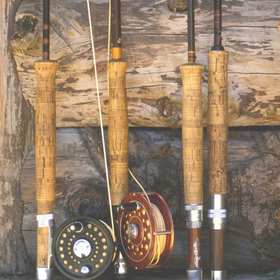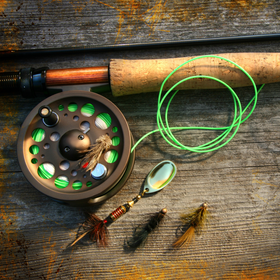Fishing for Striped Bass or Stripers for short has experienced something of a revolution in the last two decades or so. Long thought to be the realm of fishers using terminal gear, Stripers like many, many saltwater species has become a favorite target of fly fishers as well.
Striped Bass range from Florida to Nova Scotia, unlike the rest of the anadromous population the Florida striped bass inhabit freshwater. It is luck of geography that this hearty game fish lays in close proximity of the fishing public. And furthermore it seems to withstand the onslaught of fishers better than most game fish. This is not to say there isn’t controversy, hence issues surrounding the stripers and their numbers. As recently as the 1990’s Maryland enacted an all out ban on stripers fishing that last five years. After the ban was lifted, distinct limited catch and release only seasons were put in its place. The result is stocks are back up, and none of the competing interests are happy. Not uncommon results when trying to legislate fishing resources.
Nevertheless the stripes are not going anywhere soon, and if similar stories of redfish, snook and tarpon, have any impact it won’t be too long where the stripers become a game fish only and their numbers and size will flourish. Stripers have also been introduced into the San Francisco bay in the early 1900’s, and given their migratory nature they have set up permanent camp in Oregon’s Umpqua River and Coos Bay.
Now onto fly fishing for this magnificent species. Surf fishing is by far the most common form of fly fishing for stripers. The thought of it can be daunting to the untrained eye, even those that fly fish regularly in streams and rivers. But if one thinks of the surf as the current of a river, than one can begin to understand the process of it. The surf creates feeding opportunities the same as river currents, and it is from reading the surf than one can gain insight into where to cast your fly and how. The same techniques that are the bread and butter of fly fishing including the wet fly swing, the dead drift, etc. as common place in stripers fly fishing as well.
Stripers commonly feed either at the rising of a wave, or right before it breaks. Taking advantage of the waves energy pulling or lowering food to it. Like all fish, stripers are efficient and opportunistic feeders. Using every advantage nature has to offer to fill its gullet. The easiest way to take advantage of this type of situation is to cast your fly along the wave, allowing your fly to rise and fall with the natural rhythm of the water. Keep a slight tension on the line. Unweighted flies are always more lifelike, and this is crucial to fooling bass with your offering. An eight or nine weight rod with floating line is your best bet in this type of fishing.
Stripers feeding in the surf follow a very distinct rhythm, as the baitfish are controlled by the turbulence of the surf. Watch for the feeding to occur and time your cast appropriately. Positioning yourself at angle and allowing the waves to play your fly naturally will result in a more lively presentation, and keep you in greater contact with your fly.
Saltwater flies of choice are Clousers and Decievers. And tied especially for the New England stripers are Ray’s Fly, and Sand eel. Future articles will discuss flats fly fishing for the stripers.




